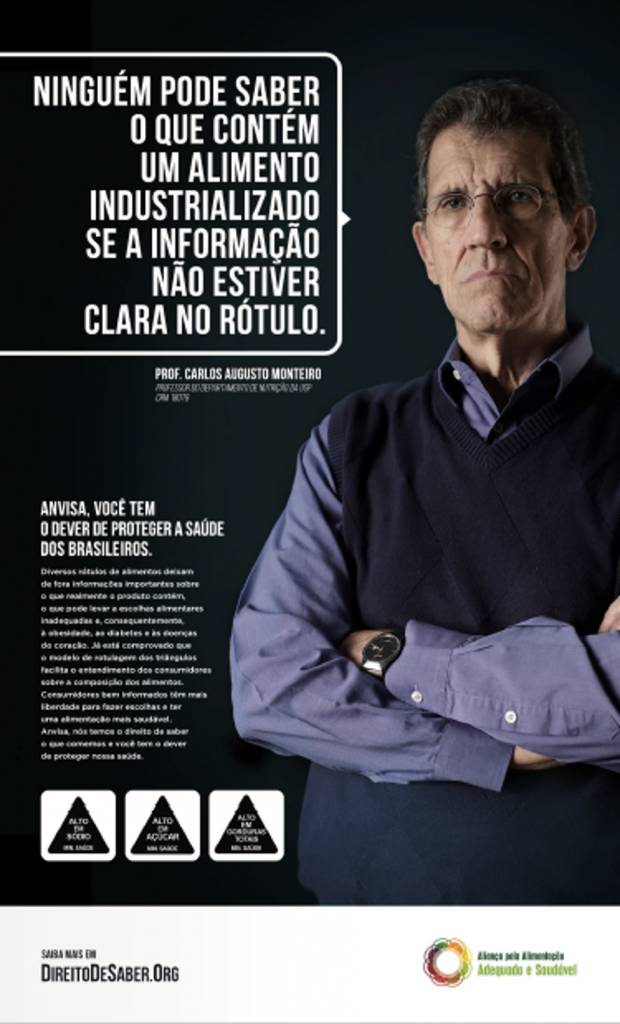Over half of Brazil’s population is overweight or obese, contributing to noncommunicable diseases like diabetes, heart disease, cancer and others. And the problem is growing, as one in every three children between 5 and 9 years old in Brazil is overweight or obese.
To combat the growing obesity epidemic, international organizations such as the Pan American Health Organization recommend bold, tested food warning labels as a cost-effective way to provide consumers with clear information about what they are eating.
Countries such as Chile, Peru and Uruguay have adopted warning labels on packaging and are seeing big results. In Chile, 68 percent of people have said they have changed their eating habits thanks to clear warning labels.
In Brazil, after several years of debate, a proposal to use black triangles for a warning label was submitted by the Brazilian Institute of Consumer Rights (Idec), in collaboration with the University of Paraná, and supported by the Alliance for an Adequate and Healthy Diet, a coalition composed of more than 40 organizations.
“The triangle is commonly recognized as a warning symbol in Brazil, and the black and white design allows consumers to easily identify products that are high in fat, salt or sugar among otherwise colorful packages,” said Luiza Amorim, Brazil communication manager for Vital Strategies.

A testimonial from the “Right to Know” campaign, in support of the black triangle warning label model
Studies have backed this up, showing that 76 percent of Brazilians understanding what they are eating when the black triangles are used. Studies show that labeling using traffic light signals – what the food and beverage industry prefers – is much less noticed and clear to consumers.
“No one can know what an industrialized product contains unless this information is clearly placed on its labels,” said Professor Carlos Augusto Monteiro, the professor in the Nutrition Department of the School of Public Health, Universidade de Säo Paulo.
In May 2018, Anvisa, a government agency, opened a technical consultation, collecting opinions from experts and consumers on various warning label models including the black triangle. The consultation drew more than 3,000 contributions in support of the black triangles. A public consultation to define the new Brazilian labeling model was expected to happen in 2018, but the process has been delayed because of interference from food and beverage companies.

A testimonial from the “Right to Know” campaign, in support of the black triangle warning label model
Meanwhile, the Alliance for an Adequate and Healthy Diet launched a national communication campaign, “Right to Know,” with technical support from Vital Strategies.
“Right to Know” features testimonials from patients, doctors, parents and consumers about the importance of having clear food labels and urging Anvisa to protect the health of Brazilians with the enforcement of the black triangle model. The campaign ran for four weeks on television, radio and digital media channels, and will be promoted on billboards, in print and online.
Fabiano Luder, a Type 2 diabetes patient, said in one of the testimonials that his diet had caused his illness. “With clearer information in the food labels, my life would be different.”
The process to decide on which warning labels to use is expected to continue in 2019.